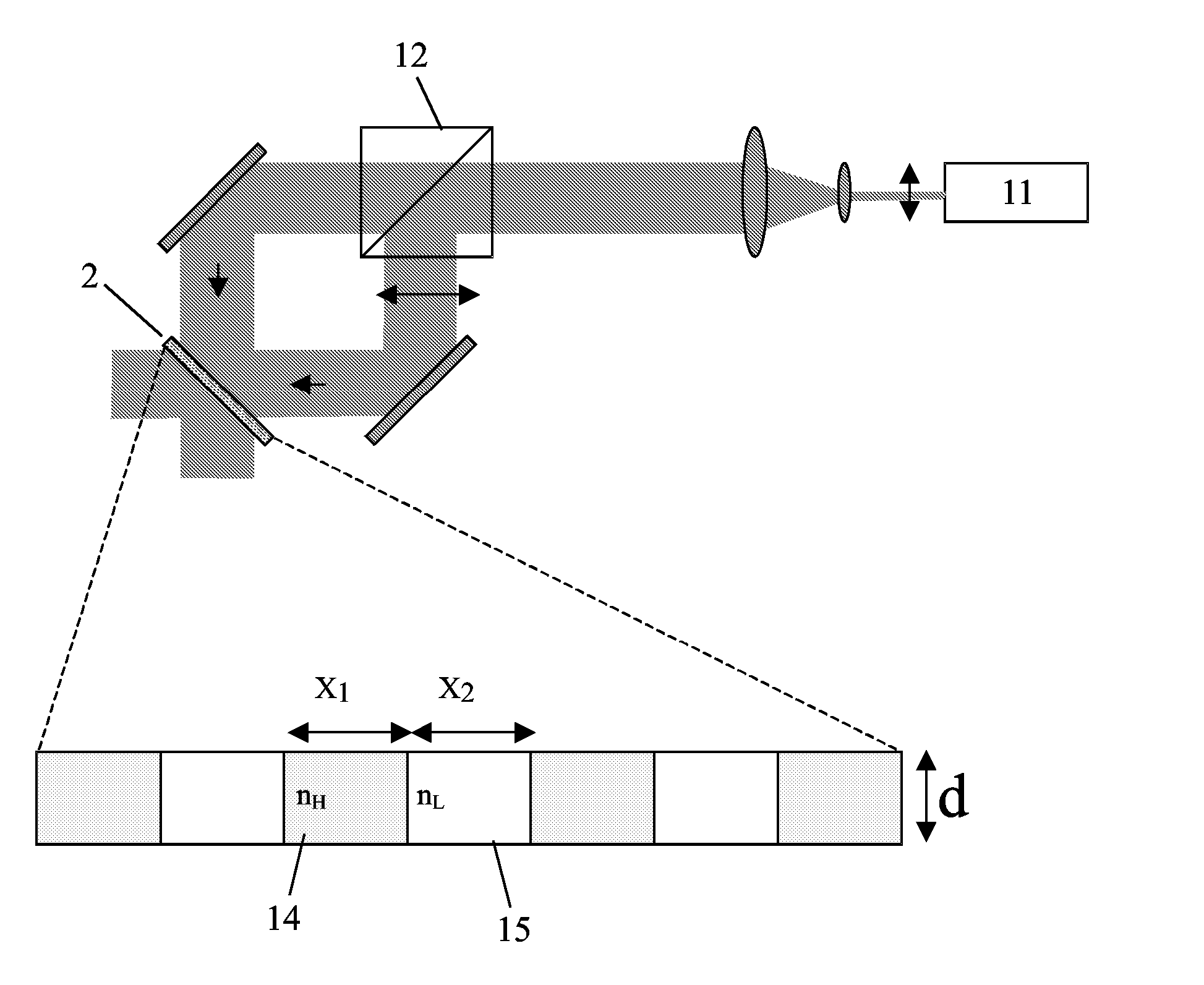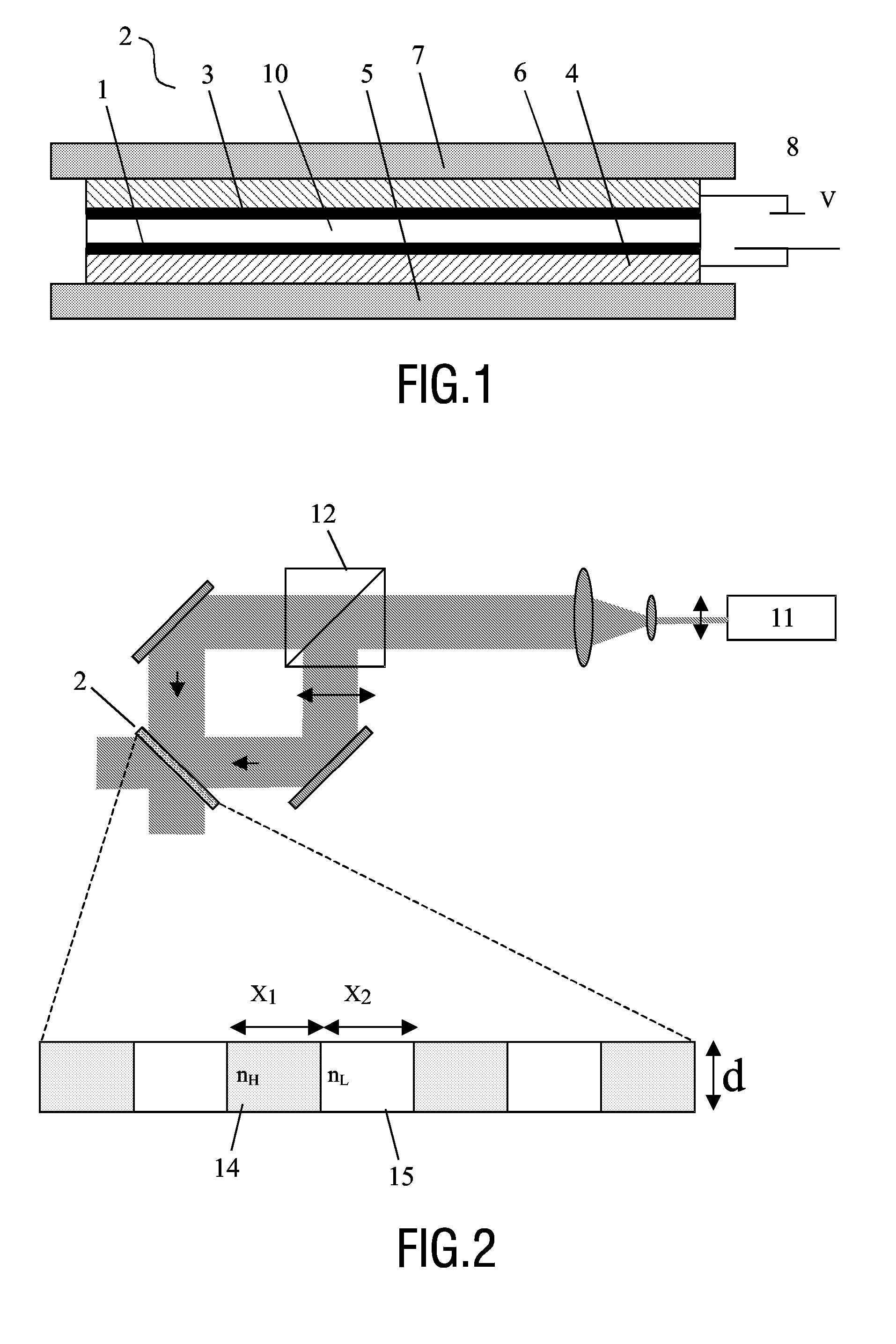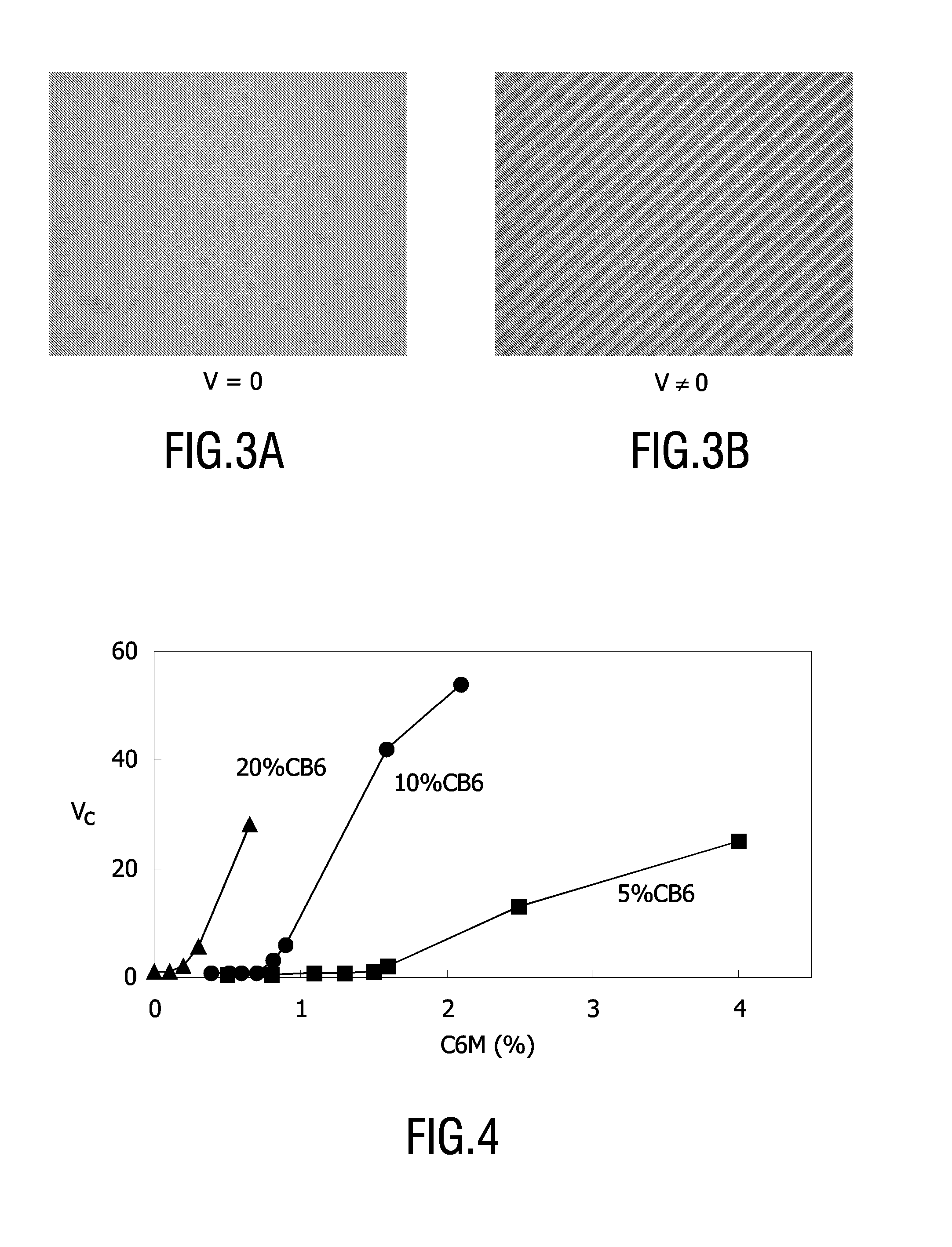Dynamic Liquid Crystal Gel Holograms
a liquid crystal gel and hologram technology, applied in the field of dynamic holograms, can solve the problems of complex material manufacturing and lack of flexibility for in situ liquid crystal control, and achieve the effects of high transparency, simple fabrication, and easy operation
- Summary
- Abstract
- Description
- Claims
- Application Information
AI Technical Summary
Benefits of technology
Problems solved by technology
Method used
Image
Examples
Embodiment Construction
[0068]FIG. 1 shows a general layout of a cell 2 used for holographic liquid crystal elements according to the invention. The element comprises a transparent cathode 4 and a transparent anode 6 electrically connected to a power supply 8 for creating an electrical field between these. The electrodes are held by transparent substrates 5 and 7 and encompass a LC gel phase or a LC pre-gel mixture 10. Macroscopic orientation within the pre-gel mixture is induced by orientation layers 1 and 3. These layers are usually made of uniaxially rubbed polymer such as polyimide for planar orientation. In order to induce perpendicular orientation of molecules with respect to surface the orientation layers can chosen to be surfactants. The various kinds of applicable layers are known by those skilled in the art.
[0069]FIG. 2 illustrates a simple layout for forming a holographic element. Here, in a first step, a beam from a laser 11 is split by a polarizing beam splitter 12 and then brought together t...
PUM
| Property | Measurement | Unit |
|---|---|---|
| network density | aaaaa | aaaaa |
| electric field | aaaaa | aaaaa |
| threshold switching voltage | aaaaa | aaaaa |
Abstract
Description
Claims
Application Information
 Login to View More
Login to View More - R&D
- Intellectual Property
- Life Sciences
- Materials
- Tech Scout
- Unparalleled Data Quality
- Higher Quality Content
- 60% Fewer Hallucinations
Browse by: Latest US Patents, China's latest patents, Technical Efficacy Thesaurus, Application Domain, Technology Topic, Popular Technical Reports.
© 2025 PatSnap. All rights reserved.Legal|Privacy policy|Modern Slavery Act Transparency Statement|Sitemap|About US| Contact US: help@patsnap.com



